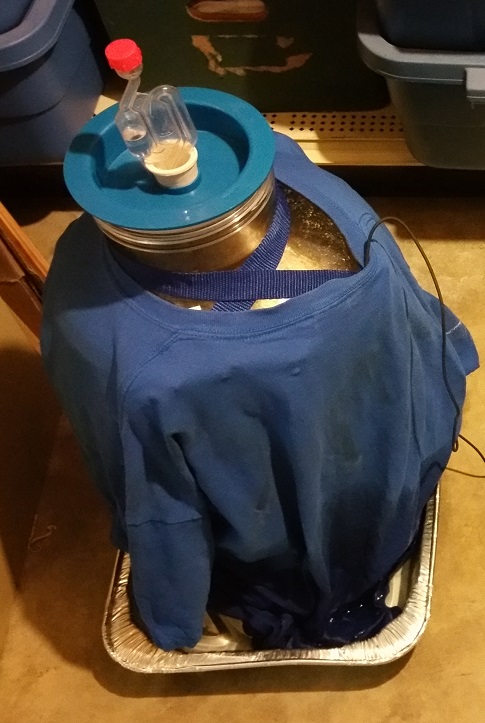Brewing1976
Well-Known Member
- Joined
- Apr 18, 2019
- Messages
- 122
- Reaction score
- 19
I I’m able to boil a full 5 gallons. Should I put little more then 5 gallons in the pot cause of something it evaporating?

I I’m able to boil a full 5 gallons. Should I put little more then 5 gallons in the pot cause of something it evaporating?
So if doing a 5 gallon boil how much water should you use?
Are you brewing extract or all grain or partial mash?So if doing a 5 gallon boil how much water should you use?
This is my first time brewing in about 6 years. I’m using brewing kits. I brewed my first beer this weekend. I did 2.5 gallon brew when I put in the fermenter I only had about gallon and half. So I’m hoping with adding that much water it doesn’t come out like crapLike @mongoose33 says above, I also think you would benefit from taking an afternoon and accurately measuring and boiling a known amount of plain water (say 6.5 gallons) for an hour using your equipment, then measure what’s left after cooling and voila... you know the boil off rate for YOUR equipment setup.
Also remember to take into account volume additions if you’re using LME as a total for your boil volume as well as volume losses if you’re using crushed grains (grain absorption) in a BIAB method.
How big is your kettle? Keep in mind the need for extra volume to avoid messy boil-overs too. I think an 8 gallon kettle is about right for full volume boils yielding approximately 5.5 gallons into the fermenter.
Extract kitAre you brewing extract or all grain or partial mash?
As other have said you need to do some basic boil off tests and that will help you determine the amount of water for a full boil.
For extract personally I would not do a full as being able to add top off water has it advantages like aiding cooling and being able to fill exactly as much as you want. If you over estimate your boil off then you need to add sugar or DME to compensate, where as if you count on doing some top off water it is less of a concern. Staging your extract additions can be done to give you similar hop utilization to a full boil. Less energy to boil less liquid too.
This is my first time brewing in about 6 years. I’m using brewing kits. I brewed my first beer this weekend. I did 2.5 gallon brew when I put in the fermenter I only had about gallon and half. So I’m hoping with adding that much water it doesn’t come out like crap
Right now temp is ok where it is. But I might have to getting a heating mat so I can put it my basement in a old chest freezerIt'll be beer. You have two things going for you; one is that you're not a newbie, though there's some rust that needs to be knocked off. Your relearning curve should be fast.
Second, it'll be beer. Brewing is a pretty resilient process, you have to really work to screw it up. As long as your water is good, you've practiced good cleaning and sanitation habits, and you control fermentation temp, it should be fine.
How are you going to control fermentation temp?
Right now temp is ok where it is. But I might have to getting a heating mat so I can put it my basement in a old chest freezer
So would you make use the refrigerator to cool it down? Then buying a heating mat?Yeast is exothermic, meaning it produces heat while working. It can raise the temp of the wort 5 to 10 degrees above what ambient temperature is. So if you're ambient is, say, 69, you might think it's ok, but you may be as high as 79. Since yeast will express different--and often undesirable--flavors at high temps than normal temps, you want to avoid that unless it is your intent.
Some beers, like Belgians, are designed for higher temp fermentation, but most beers/yeast are not.
So would you make use the refrigerator to cool it down? Then buying a heating mat?

Enter your email address to join: